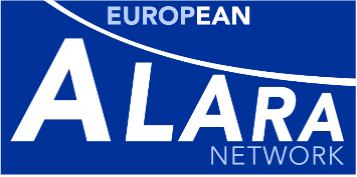The 24th issue of the ALARA Newsletter presents current RP issues that have arisen in the industrial and medical sectors. The optimisation of occupational doses - particularly extremity doses that can be received by practitioners are often neglected: the example given of the important reduction of PET technologists doses achieved in a British dispensary (see paper Tout & al.) shows the potential for progress, especially where new techniques are used. The increase in radiological incidents (see paper Kropacek) and accidents in the medical sector in Europe suggest a need for for a real raising of awareness for medical physicians and doctors, surgeons, radiological technologists, manufacturers, RPEs and RPOs, etc. Industrial radiography is another field where the radiological protection culture is low in comparison with the radiological risks generated by the activities: it has to be noted that the ARAN and RECAN networks, both supported by the IAEA, have chosen this topic for their annual workshops (see paper Sadagopan & al.). Furthermore, the feedback exchanges made inside the European NORM network (see paper Schulz) show that there is still a limited knowledge of radioactivity, radiological risks, means of protection and monitoring in the NORM industries community.
Better education and training of the public and workers, improving of radiation source safety, and the recognition of the competences, roles and duties of radiation protection experts are key elements for improving radiological protection culture. It is the role and the creed of EAN to promote and participate to all initiatives that could assist in this process.
Content of the issue
- Editorial, A. Schmitt-Hannig, P. Croüail, P. Shaw (EAN),
- Extremity dose to nuclear medicine technologists in routine clinical practice with 18F-FDG, D. Tout, H. Moore, PJ. Julyan, DH. Hastings (North Western Medical Physics, The Christie NHS, Foundation Trust, Manchester, UK),
- The European Radiation Protection Authorities Network, S. Fennell (RPII, Ireland), N. Stritt (SFOPH, Switzerland),
- Summary of the 1st ARAN Workshop: "Improving Radiation Protection in Industrial Radiography", G. Sadagopan, P. Deboodt (IAEA), D. Woods (ANSTO, Australia), K. Sakai (NIRS, Japan),
- 4th RECAN Workshop on "Problems in the industrial application of ionizing radiation sources" - Risan, Montenegro, November 2008,
- View of the project "European ALARA Network for Naturally Occuring Radioactive Material - NORM" and its future, H. Schulz, E. Ettenhuber, K. Flesh, L. Geldner, R. Gellermann,
- Radiological Incidents during Treatment of Breast Cancer in the Czech Republic, J. Kropacek (SONS, Czech Republic).
